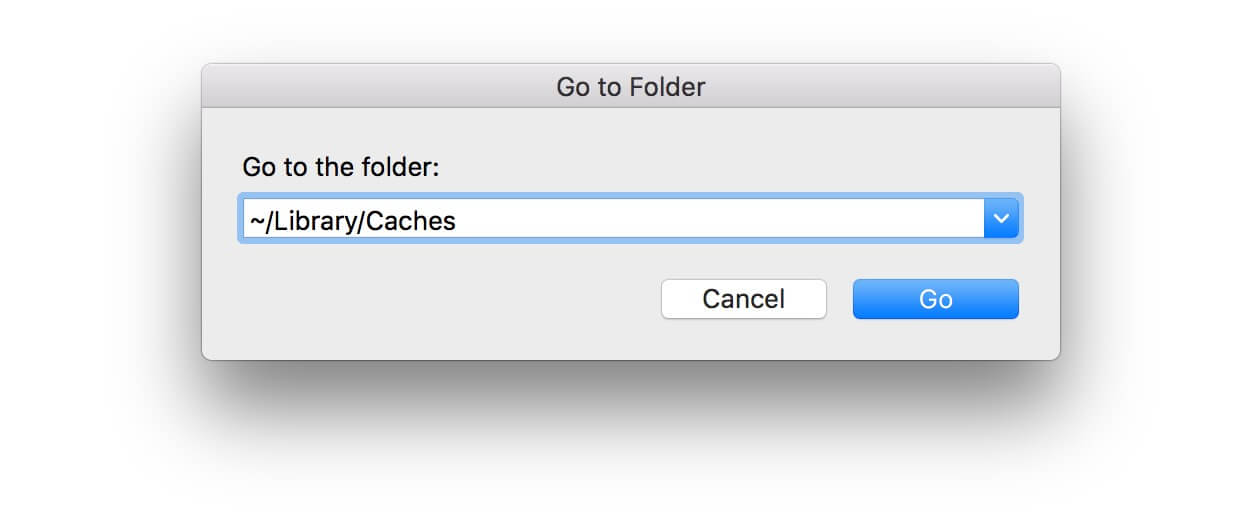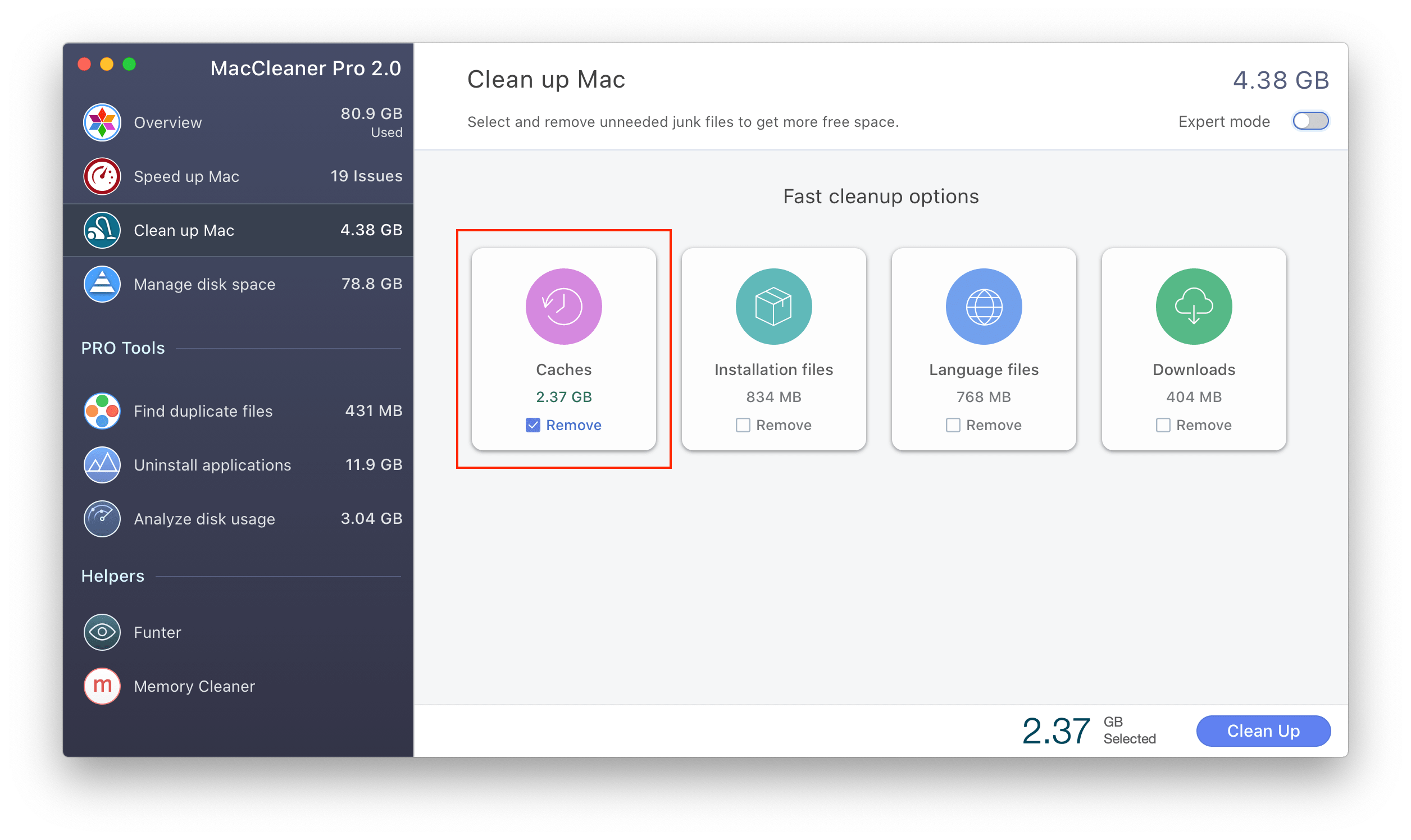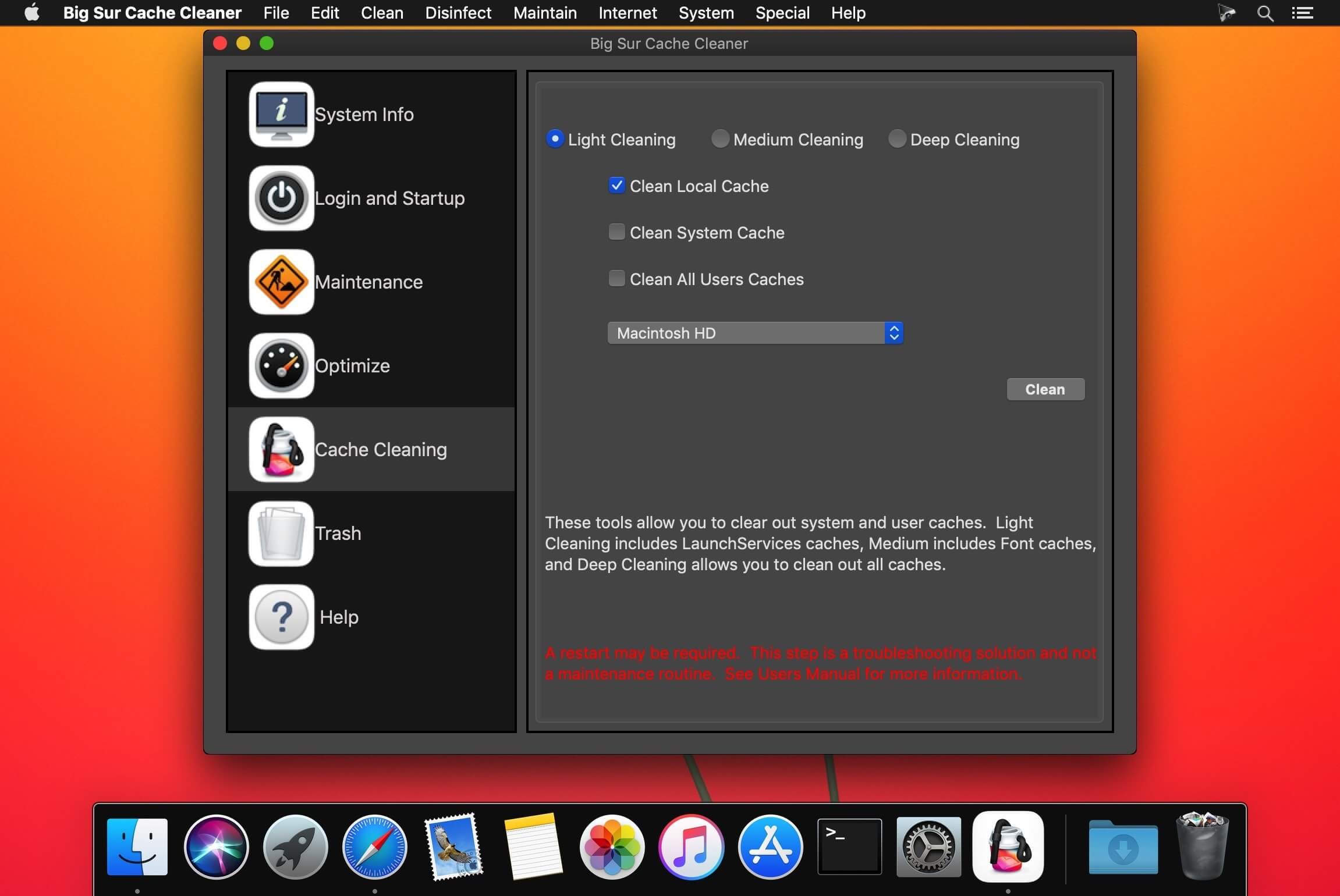
Please, be careful while deleting caches files. Select files and folders you want to remove, and drag them into the Trash.ĭon't forget to empty Trash for the complete removal of cache files.Type ~/Library/Caches in the window currently displayed and hit Go.Click Go→ Go to Folder in the Finder’s menu bar.
#CACHE MAC CLEANER HOW TO#
How to Clear Cache on Mac?Ĭache files can be removed from your Mac manually. While the cache files on your Mac can be used by the applications you use regularly, they can be removed for those apps which you run rarely or which you have already deleted but the leftovers still remain on your Mac.
#CACHE MAC CLEANER DOWNLOAD#
So, cache files are kept on a Mac in order not to download the technical data every time they are needed by the application.Įven though cached data is usable for your Mac, it can take up much space, and over time these files may become damaged. For instance, when you're using the iTunes app, it will store songs and other related data in the cache, like the album's cover and a collection of popular songs. These cache files are kept in the Application Cache folder. When you run applications, they initiate collecting files, which we call cache files, and for reuse later. Basically, these are temporary files necessary for the apps’ operations on a Mac. There are several kinds or cache data: User Caches, System Caches and Web Caches. In this post, you’ll find out what is cache, how to delete cache on a Mac and what is the best application among five cache cleaners for Mac. This clutter contains caches, logs, mail attachments and other junk files that take up space on a Mac. Over time, users store tons of junk files on their Macs, and regular cache cleaning is in order. This it is a result of daily using a Mac. If they did, they would be locked and you couldn't delete them.If you are a Mac user, sooner or later you may face the problem that your Mac storage is almost full. Perform a clean boot: This step is necessary to make sure the cache files don't get loaded during startup.

Here's an overview of the process to delete your Microsoft Office Document cache: After you delete the cache, sync may happen automatically, or you may need to sync manually. Deleting the cache isn't dangerous, and it might clear up the syncing problem. To fix this problem, try manually deleting your Microsoft Office Document Cache.

When you click Repair in the Upload Center error message, it fails again. You may also see errors associated with the other cloud app you were using. When you click to repair, the Upload Center produces another error message, offering to backup your cache and create a new one for you. You'll see an alert in your status bar that says the Microsoft Office Document Cache encountered a problem, with a link to repair.

When cache file corruption happens, your file will seem to be stuck in the Office Upload Center.
#CACHE MAC CLEANER UPDATE#
If you're having OneDrive for Business issues, update your OneDrive sync app by following the guidance in Sync files with OneDrive in Windows. If you're using another cloud app, refer to that app's Help or product support information about fixing sync issues. You may experience similar issues when using other apps. This article discusses Office Document Cache issues that might occur when you’re using OneDrive.


 0 kommentar(er)
0 kommentar(er)
